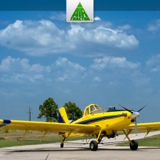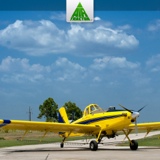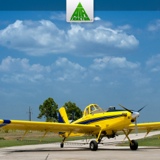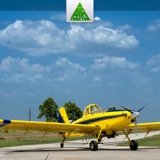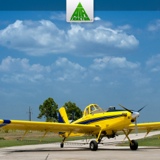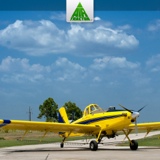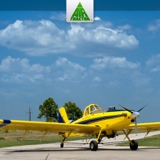Information
-
Document No.
-
Audit Title
-
Client / Site
-
Conducted on
-
Prepared by
-
Location
-
Personnel
Auditor Qualification Review Internal Auditor Review the training and experience of the person assigned to ensure that they are in fact qualified to undertake the audit. Determine that the auditor meets the requirements of CAR 706.07(5). Name of Auditor: I have reviewed the qualifications of the above auditor and have determined that he/she is qualified to audit the following areas: List areas as required: And external auditor was used during this audit. See below for the auditor qualification review. Quality Assurance Manager or Delegate Signature. Date: External Auditor Review the supplied resume to ensure that training and experience of the person assigned is in fact qualified to undertake the audit. Name of Auditor: I have reviewed the qualifications of the above auditor and have determined that he/she is qualified to audit the following areas: List areas as required: This document was signed by the PRMC and is on file in the QA system. A copy of the external auditors resume, with qualifications is also on file. Person Responsible for Maintenance Control. Date:
-
Date & Time
-
Address
1.0 Safety Board Postings
-
1.1 General safety and health duties and responsibilities of employers, workers & supervisors
-
1.2 Worker to know, participate and refuse unsafe work and right to protection from discrimination
-
1.3 Supervisor name and contact number provided
-
1.4 Procedure for reporting unsafe conditions or hazards in the workplace
-
1.5 Safety and health committee or the worker safety & health representative name and contact number
-
1.6 Emergency Response Plan
2.0 Policies programs and SAFE work procedures
-
2.1 Policies and programs (ie. safety and health policy, training plan, working alone or in isolation, violence & harassment prevention, incident investigation, workplace health and safety program [if 20 or more employees])
-
2.2 Documented SAFE work procedures (job/task specific) (ie. machinery, equipment, tools, ladders, pesticides, lockout, musculoskeletal injuries, personal protective equipment PPE)
3.0 Hazards & control measures
-
3.1 Hazards to which the worker may be exposed in the workplace and any control measures undertaken to protect the worker
4.0 First aid
-
4.1 Location of first aid kits and eye wash facilities
-
4.2 Means to summon first aid (first aid attendant name and contact information)
5.0 Workplace safety and health checklist
-
5.1 Has worker been trained on the safest way to do the job?
-
5.2 Are workers encouraged to raise safety and health concerns?
-
5.3 Does the company have regular safety and health discussions?
6.0 Hiring and training
-
6.1 Are new workers previous skills and experience verified before they begin working at your workplace?
-
6.2 Does the owner ensure that everyone is trained to perform their duties safely before beginning work?
-
6.3 Is training verified by worker demonstration and close supervision?
-
6.4 Is there a system in place to ensure training records are kept and easily accessible?
7.0 Responsibilities (Employer)
-
7.1 Does the employer know and follow workplace safety and health requirements?
-
7.2 Does the employer provide a safe workplace, equipment and tools?
-
7.3 Does the employer provide safety training for all duties?
-
7.4 Does the employer provide required personal protective equipment PPE?
-
7.5 Does the employer provide first aid equipment and personnel trained in first aid?
8.0 Responsibilities (Worker)
-
8.1 Does the worker understand and follow specific workplace safety and health requirements?
-
8.2 Does the worker use safety equipment and devices?
-
8.3 Does the worker follow SAFE work procedures and practices?
-
8.4 Does the worker report workplace hazards and unsafe conditions?
9.0 Responsibilities (Contract Workers)
-
9.1 Are safety and health expectations discussed with contracted employers?
-
9.2 Are hazards at your workplace discussed with contractors?
10.0 Medical aid
-
10.1 Is a first aid kit available at work sites such as the dispatch office, yard or hangar?
-
10.2 Is someone at the workplace trained to administer first aid?
-
10.3 Are you aware of reporting requirements for serious incidents?
11.0 Machinery and powered mobile equipment
-
11.1 Are guards and shields kept in place on power takeoffs, belts, chains and other pinch points?
-
11.2 Do equipment operators ensure young children and bystanders are at a safe distance away from machinery whether moving or stationary?
-
11.3 Is there a standard rule at your workplace prohibiting extra riders on equipment such as ATVs or lift trucks?
-
11.4 Are seatbelts worn on lift trucks and tractors equipped with rollover protection?
-
11.5 Is the power always turned off and are the keys removed before adjusting or servicing equipment and power tools?
-
11.6 Are lift trucks, tractors and riding mowers equipped with fire extinguishers?
-
11.7 Are drawbar loads always hitched to a drawbar rather than the tractors axle or three point hitch?
-
11.8 Are emergency stops and safety devices in good working order on machinery?
-
11.9 To prevent carbon monoxide poisoning, are doors and windows in the building, hangar always open when starting or running a tractor, lift truck or other engine indoors?
-
11.10 When moving equipment on the roadways are you following the requirements of the Manitoba Highway Traffic Act?
-
11.11 Do you prohibit ground starting or jumpstarting machinery at your workplace?
-
11.12 Have all the equipment operators received training on the specific equipment they are operating such as a forklift or riding mower?
-
11.13 Do machinery operator's perform a walk around check before moving equipment?
-
11.14 Do all machinery operator's avoid wearing torn or ragged clothing when working near machinery?
-
11.15 Are there audible warning devices on powered mobile equipment over 1 ton (ie. for moving in reverse)?
-
11.16 Are all equipment instruction manuals readily available to the operator?
-
11.17 Have you supplied and ensured workers are wearing the appropriate personal protective equipment PPE when using powered mobile equipment (ie. helmets on ATVs)?
-
11.18 Are there procedures in place for using vehicle hoists and are workers trained in the procedures?
-
11.19 Do you conduct and keep records of machinery inspections?
-
11.20 Are safety locks used when moving hydraulically raised equipment?
12.0 Pesticides
-
12.1 Are there safe work procedures for working with pesticides and are workers trained in the procedures?
-
12.2 Are pesticides stored in a safe place?
-
12.3 Are signs posted on pesticide storage areas to warn others of the hazards inside?
-
12.4 Are pesticides stored and labeled and proper containers?
-
12.5 Are pesticide containers disposed of properly and safely?
-
12.6 When mixing pesticides, do you ensure the area is well ventilated?
-
12.7 Is there a spill kit available in case of a spill?
-
12.8 Is personal protective equipment PPE being used by workers when applying or handling pesticides (ie. goggles, respirators, aprons, rubber or chemical proof gloves, chemical suits, etc.)?
-
12.9 Do you provide a 15 minute eyewash station?
13.0 Electricity
-
13.1 Is all wiring in buildings and around the workplace in good condition?
-
13.2 Are all electrical appliances and power tools used CSA approved?
-
13.3 Are all electrical power tools in good operating condition?
-
13.4 Are overhead wires high enough to clear machinery?
-
13.5 Are power cords, plugs and switches free of defects?
-
13.6 Are all electrical panels accessible (ie. not obstructed or impeded by objects and materials)?
14.0 Ladders
-
14.1 Are ladders at your workplace in good working condition?
-
14.2 Are ladders stored and secured out-of-the-way?
15.0 Buildings
-
15.1 Are stairs, ladders, aisles and floors uncluttered and in good repair (good housekeeping practices)?
-
15.2 Do stairs have handrails?
-
15.3 Do upper levels or floors of buildings have protective guard rails to prevent falling?
-
15.4 Are doors and gates to hazardous areas such as silo entrances, pesticide storage and the hanger kept closed and secure to keep children and visitors out?
-
15.5 Are fire extinguishers available in each building?
-
15.6 Are no smoking signs posted at your workplace?
-
15.7 Are all routes to exits kept clear?
-
15.8 Have you carried out assessments in areas where asbestos may be present at your workplace?
-
15.9 Have you developed SAFE work procedures for working with or near asbestos?
16.0 Confined spaces
-
16.1 Have you listed and assessed each confined space at your workplace?
-
16.2 Have you developed SAFE work procedures for these confined spaces?
-
16.3 Have you included entry permits, standby workers, personal protective equipment PPE, emergency plans in your safe work procedures for confined spaces?
17.0 Personal protective equipment PPE
-
17.1 Have you assessed the situations that require your workers to wear high visibility apparel?
-
17.2 Do you provide high visibility apparel and ensure workers wear them?
-
17.3 Have your workers been provided proper personal protective equipment PPE for the tasks they perform, hearing protection, eye protection, respirators, aprons, gloves, etc.)?
-
17.4 Is PPE regularly inspected and in good working order?
18.0 Welding
-
18.1 Are gas welders equipped with flashback arrestors?
-
18.2 Are acetylene and oxygen cylinders stored properly?
-
18.3 Have you supplied the appropriate personal protective equipment PPE for welding?
-
18.4 Do you ensure that workers wear their PPE and follow safe work procedures for welding?
19.0 Safety and health at your workplace
-
19.1 Are toilet and handwashing facilities available for workers?
-
19.2 Does your workplace supply drinking water to workers?
-
19.3 Does your company follow Manitoba's non-smokers protection act?
-
19.4 Do you provide your workers with a clean eating area?
-
19.5 Does your company provide training certification where applicable (ie. first aid, hearing testing, forklift training, TDG, WHMIS, confined spaces, etc.)?
20.0 Sample workplace safety and health topics
-
20.1 Do you have a system in place to provide your workers with safety and health information (ie. safety notice board)?
-
20.2 Have you explained worker rights and responsibilities?
-
20.3 Have you given your workers all the mandatory safety and health information (ie. plans for working alone, harassment and violence, emergencies, etc.)?
-
20.4 Do you regularly discuss safety with your workers?
-
20.5 Do you involve your workers with safety and health issues at your workplace (ie. toolbox talks, training on new equipment, processes, safety bulletins, etc.)?
21.0 Identifying and controlling hazards
-
21.1 Have you developed an inventory of all tasks performed by workers?
-
21.2 Have you assessed the risk of the hazards identified in these tasks?
-
21.3 Have you developed a SAFE work procedure for each task?
-
21.4 Have you trained workers to use SAFE work procedures?
-
21.5 Are you ensuring workers follow standard operating procedures SOP's?
22.0 Pesticides and biological substances
-
22.1 Do you maintain an inventory of all pesticides?
-
22.2 Do you have access to current material safety data sheets MSDS?
-
22.3 Are you following personal protective equipment PPE and, first aid requirements from the MSDS sheets?
-
22.4 Have you developed safe work procedures for the handling, usage, storage, and disposal of each product?
-
22.5 Have you provided training to your workers that are working with these pesticides?
-
22.6 Are you monitoring workers to ensure they are wearing the appropriate PPE and following standard operating procedures?
-
22.7 Have you identified harmful biological substances at you workplace (ie. mould, bacteria)?
-
22.8 Have you provided proper personal protective equipment PPE, tools and training for workers that may encounter these substances?
23.0 Musculoskeletal injury ( MSI)
-
23.1 Have you assessed the risk of MSI at your workplace?
24.0 Emergencies
-
24.1 Have you made a list of possible emergencies including fire, pesticide spills, extreme weather, and serious incidents?
-
24.2 Have you produced SAFE work procedures for each emergency and provided your workers with training?
-
24.3 Have you created emergency contact information sheets for workplace?
-
24.4 Do your workers know how to explain to emergency responders (ie. fire, police, ambulance etc.) and where the emergency response plan ERP is located on your premises?
-
24.5 Do your workers have adequate means of communication?
-
24.6 Do you have first aid kits and fire extinguishers in all mobile equipment?
-
24.7 Have workers been trained on basic machinery (ie. shutdown, hydraulics, kill switches, etc.)?
-
24.8 Is emergency information posted on your safety board (ie. directions to the safe meeting location at the workplace, emergency phone numbers, names and phone numbers of personnel trained in FirstAid)?
25.0 Inspection
-
25.1 Have you compiled a list of areas that will be inspected (ie. buildings, storage sheds, machinery, etc.)?
-
25.2 Have you developed an appropriate checklist for each inspection?
-
25.3 Have you decided how often these inspections will occur?
-
25.4 Are you aware that certain types of equipment have a formal training course and require the operator to hold a certificate (ie. forklifts, cranes, etc.)?
-
25.5 Have you decided who will carry out the inspections?
-
25.6 Have they been trained?
-
25.7 Do you have a system in place for corrective actions?
-
25.8 Have you documented what action is needed, when it will be completed, and who is responsible for the corrective action?
-
25.9 Do you regularly check to ensure that all guards are in place on equipment?
-
25.10 Do you have a system for keeping inspection records?
26.0 Training
-
26.1 Are you providing and keeping records of safety orientations for every worker?
-
26.2 Do you keep records of workers and their qualifications (ie. driver license, pilots license, forklift operator certificates, etc.)?
-
26.3 Have you trained your workers how to perform each of their tasks safely before they begin to work?
-
26.4 Do you have written records for every task your workers have been trying to do?
-
26.5 Are your workers regularly supervised?
-
26.6 Do you evaluate your workers to ensure they are competent in their tasks?
27.0 Contractors
-
27.1 Do you check the safety and health standards of contracted employers?
-
27.2 Are you safeguarding workers from hazards introduced by those coming on to your workplace?
-
27.3 Are you making contractors aware of hazards at your workplace (ie. overhead power lines, moving aircraft, etc.)?
-
27.4 Do you perform spot checks on contractors to ensure safe behavior is being practiced?
28.0 Incidents
-
28.1 Have you developed a written procedure to investigate incidents?
-
28.2 Do you know what incidents have to be reported to workplace safety and health?
-
28.3 Have you assigned an individual to carry out an investigation when needed?
-
28.4 Have they been trained?
-
28.5 Do you keep written investigation reports?
-
28.6 Are qualifications of personnel certified in first aid current?
-
28.7 Are any of your workers qualified to perform first aid at your workplace?
-
28.8 Do you check first aid kits on a regular basis to ensure they are properly stocked?
29.0 Right to refuse
-
29.1 Have you provided workers with information on their right to refuse dangerous work?
-
29.2 Do you know how to respond when the worker exercises their right to refuse?
30.0 Safety and health program
-
30.1 Have you developed timelines for evaluating your safety and health program?
-
30.2 Have you decided what safety and health documents will be kept on file and for how long?
-
30.3 How will you evaluate your safety and health program?
31.0 Others
-
31.1 Before you carry out any demolition, do you have a plan in place with proper SAFE work procedures?
-
31.2 Have you developed standard operating procedures for working alone situations?
-
31.3 Have you developed a method that will ensure workers comply with the company no smoking policy at your workplace?
-
31.4 Have you carried out noise assessments at your workplace?
-
31.5 Have you implemented noise control procedures?
Auditor Signature
-
Signature:
QA Manager Signature
-
Signature:
